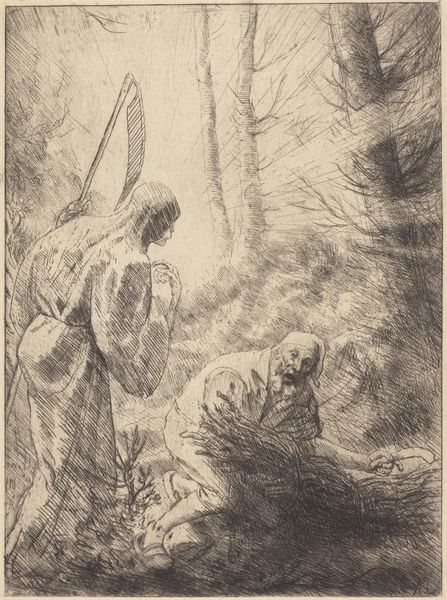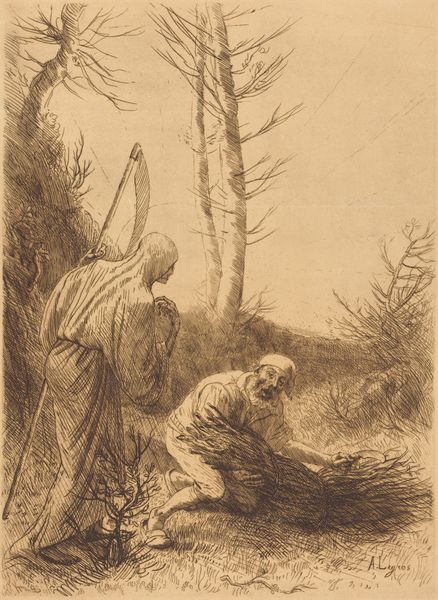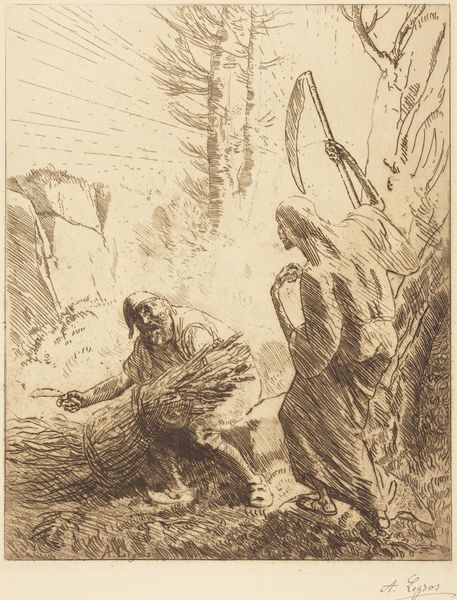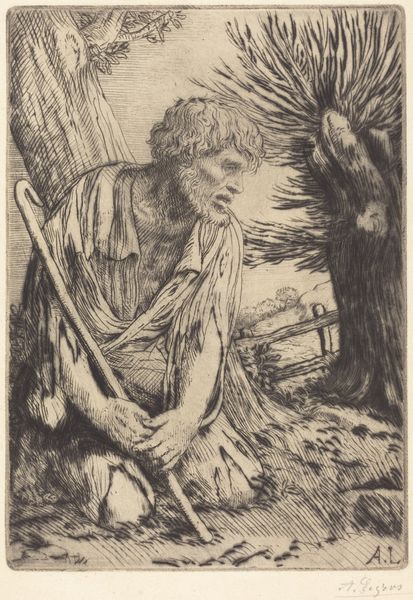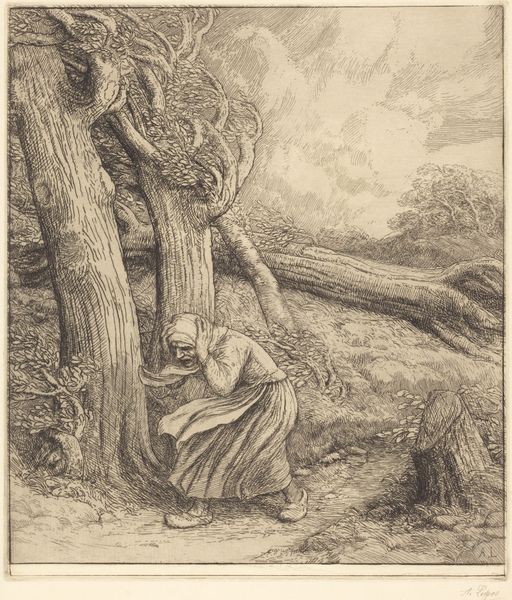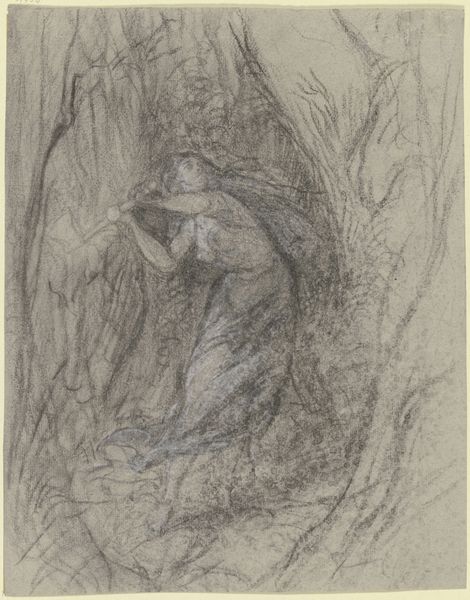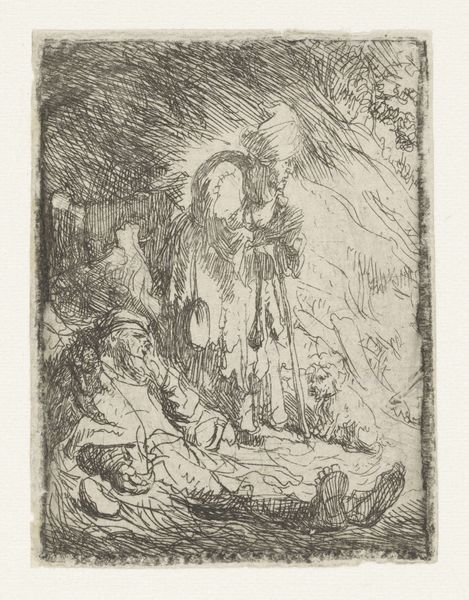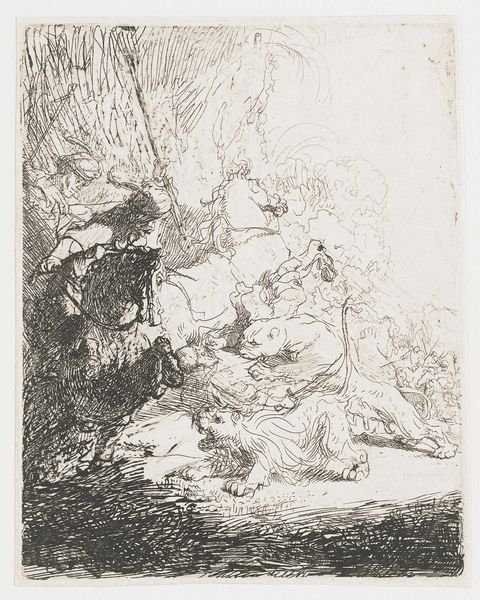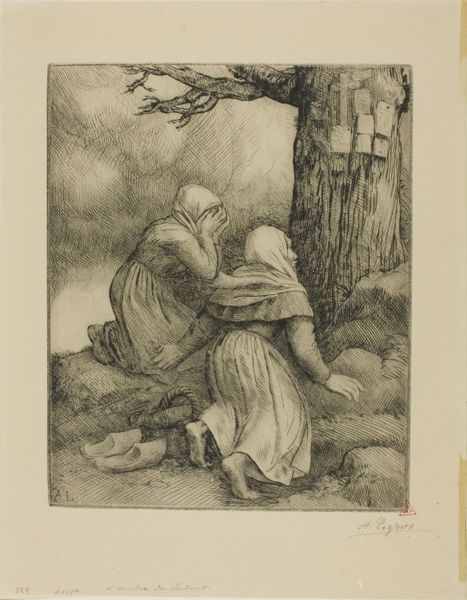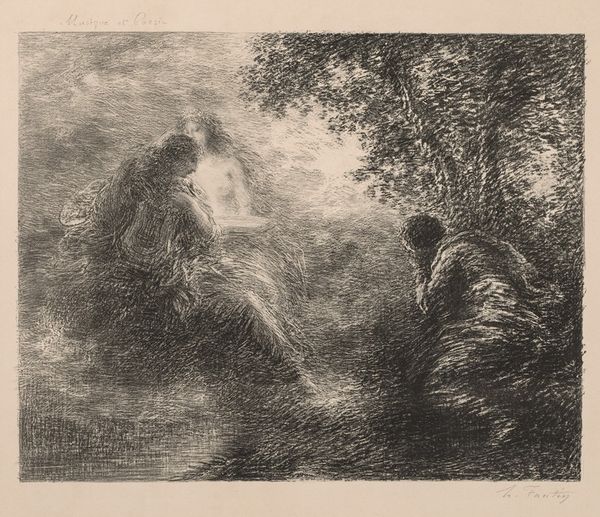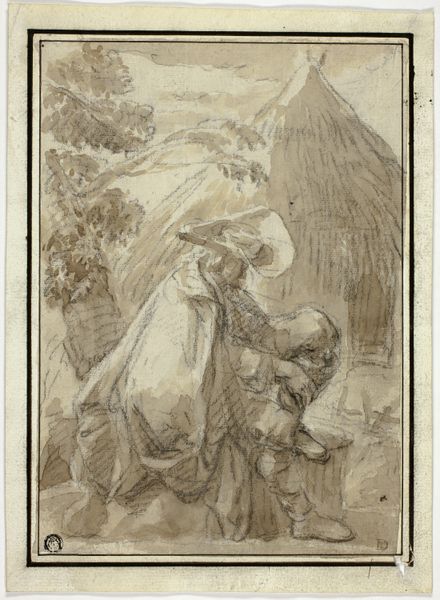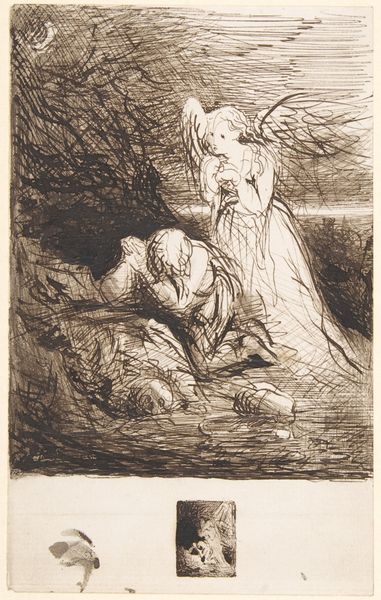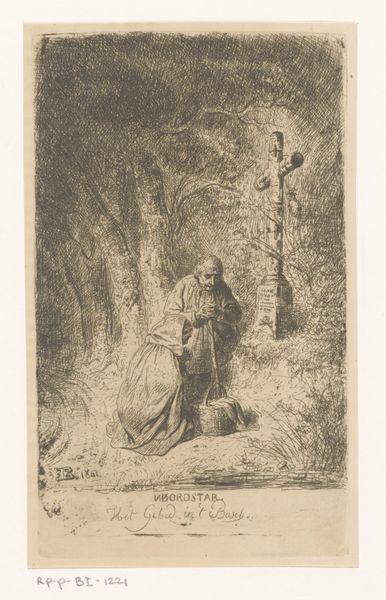
Death and the Woodcutter, 2nd plate (La mort et le bucheron)
0:00
0:00
drawing, print, etching
#
drawing
#
narrative-art
# print
#
etching
#
landscape
#
figuration
Copyright: National Gallery of Art: CC0 1.0
Curator: We're looking at an etching by Alphonse Legros, titled "Death and the Woodcutter, 2nd plate". It’s a densely worked scene, mostly in dark browns and blacks. What springs to mind when you see it? Editor: The forest. It feels trapped somehow. And bleak! This frail, old figure collapsed on a pile of wood, and then this ghostly apparition lurking behind... It reads like resignation, or maybe reluctant acceptance? I just want to build a fire, warm things up. Curator: Indeed, Legros constructs a visually claustrophobic space. The composition traps the woodcutter within a web of interwoven lines, a formal constraint mirroring the narrative’s thematic concerns. The skeletal figure of Death, introduced on the left, further intensifies the somber mood, but the etching has an underlying beauty. Editor: Well, Legros did capture the gnawing presence of something inescapable. It's odd though... death here has curves, a physique; you almost pity them! The poor woodcutter blends with his wares, just worn down... and is that his face turned upward, a final glance at the sun? He can't be enjoying that scratchy pile of kindling he's laying on. Curator: Observe how the light—or, perhaps more accurately, the absence thereof—defines the visual hierarchy. Dark tonalities dominate the foreground, receding into lighter grays and whites that subtly illuminate the figures. Consider also how the use of hatching, cross-hatching, and drypoint contribute to the print's textures. Editor: Textures tell the story, definitely. All those layered lines must have taken such dedication to lay out! Thinking about my own burdens, I sometimes wish Death had form, that I could just haggle or maybe play cards for a few more years of sunny days. Curator: This piece certainly gives one pause. It utilizes stark, uncompromising lines to expose a complex interaction of shadow and light. Ultimately, it is this dialectical engagement that elevates the artwork beyond mere allegorical representation, gesturing towards profound ontological questioning. Editor: You know, considering that bleak little woodland and its resigned residents, I still think there's a flicker of rebellion buried somewhere deep in those scratchy marks. Maybe that's where the real art lies – in our stubborn refusal to simply fade away.
Comments
No comments
Be the first to comment and join the conversation on the ultimate creative platform.
